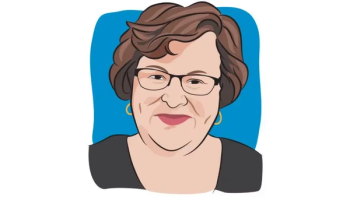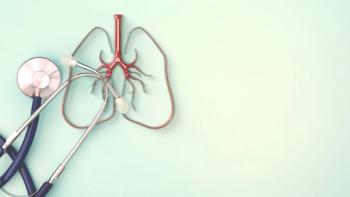
The Road to a Bone Marrow Transplant
Hoping for a cure is long and complex journey.
On Jan. 22, 2015 my sister received a PET/CT scan that had originally looked good. We'd gone upstairs from radiology to see her care team, and my dad came to tell us the good news. The problem was that he'd seen the scan images that had yet to be layered. Once they had been read and dictated by a radiologist, we knew it was bad. Her cancer had spread from where she was originally diagnosed.
It was jarring reality, almost as if she had been diagnosed all over again. We headed over to her oncologist’s office and sat before him as he gave us the dire news. The best way to proceed would be a bone marrow transplant, and a new group of doctors would be joining her care team. Presbyterian St. Luke's and CBCI would be her primary hospitals so that we could transplant as soon as possible. The faster it could happen, the better chance that she would have. Although he presented us with an option, it was hard to hold on to hope in that moment.
Because of her pneumonia and other persisting complications, the first consult that we did was largely education-based. We knew going in that she was not a candidate, but we needed to know how to make her one. It would be months before another follow-up, but everything was put on hold that March when she suffered a seizure. I remember sitting bedside her in the ICU and wondering how this could be happening. She already had a list of things that needed to be done. Now it seemed impossible.
We spent months doing consults and work-ups with cardiologists, pulmonary doctors, nephrologists and oncologists in the hopes that it would lead to transplant. They went back and forth on which one to do. Allogeneic transplant meant she would have a donor with similar DNA, like a sibling, and her risk for GVHD (graft verse host disease) and overall rejection was incredibly high. But that also meant that she could get one of our kidneys to solve the acute kidney disease she was suffering with. And with an organ, the engraftment may be more successful. With an autologous transplant, her chance of rejection was next to nothing. The biggest issue was that to do one, she would need to be in a complete remission. That, after all, had been the goal all along and no matter what we were doing, it wasn't happening.
After all was said and done, it didn’t matter. In late June she metastasized and it did not look like any combination of drugs would save her. A monoclonal antibody was available, but the research was not prevalent and the risks were high given her history of drug reactions. In the end, my sister did not want to stop treatments, so we proceeded into the unknown once more. It was a drug that caused so much damage that every treatment meant a trip to the hospital. This culminated with a bout of peripheral paralysis that lead to a month-long hospital stay and daily rehabilitation.
Upon discontinuing that drug, we headed back downtown to be consulted on the transplant. It was then that they said it would have to be an autologous. In their minds, it was not reasonable to assume that she would make it through the long process of an allogeneic transplant. But still, she was not in remission, so a transplant was a dream that we continued to hold out hope for, but was not looking to be the path she would take.
After one last-chance immunotherapy was dosed, we received news that I did not think would ever come. Her latest scan had shown she was in a full remission and we set a consult to transplant for the day before Thanksgiving. Knowing that they would say yes, I could not contain my excitement and nerves. We had waited so long and so many people said that without this, she would not survive. To know that it was happening felt surreal.
The month of December was spent more in clinical settings than it was at home. We met so many new faces and people tried to prepare us for what the better part of 2016 would hold in store for us. She received Neulasta shots to collect cells the day after Christmas, and New Year’s meant a celebration for what we were hoping would be largely, a cancer-free year. On Jan. 4, I knew that her triple-lumen catheter was infected and we went down a day early. She got two days of Vancocin (vancomycin) and on the sixth, we began her high-dose chemotherapy cocktail. She took it better than she had taken any of her other treatments and after seven days of treatment and one day of rest, on the Jan. 14, she was transplanted.
In all, the actual procedure is only a five-hour process. The build up to it seemed to take a lifetime and the days that followed would be the hardest. She had a reaction to the melphalan, causing mouth sores and incredible amounts of pain. She had two falls and her ANC took far longer to recover than they had hoped. We gave her shots to bring it up faster and on Feb. 11, she was able to leave the bone marrow unit. Although she felt awful, I could not have been happier. It wasn't over and she had many complications to work on. None the less, after 552 days, she was cancer-free.
This meant that all that she had gone through was suddenly worth it. She no longer has cancer, she had cancer. For her, I don’t think enough time has passed for her to fully understand how amazing it is. In time, I am hoping that she will come to see that although she still has complications, she does not have cancer. And that is not something that most of the people who know her, care for her and love her thought that we would be able to say.




